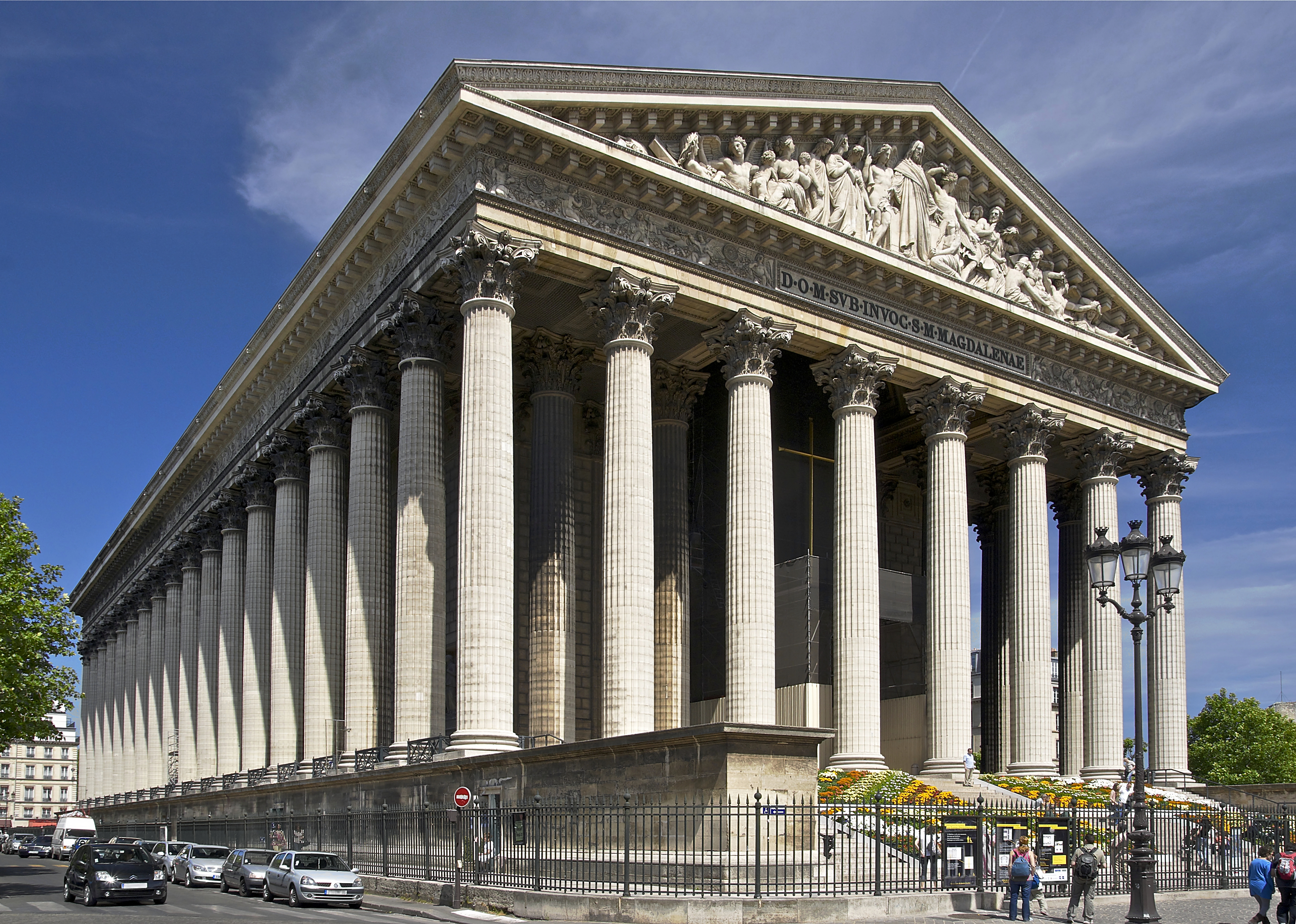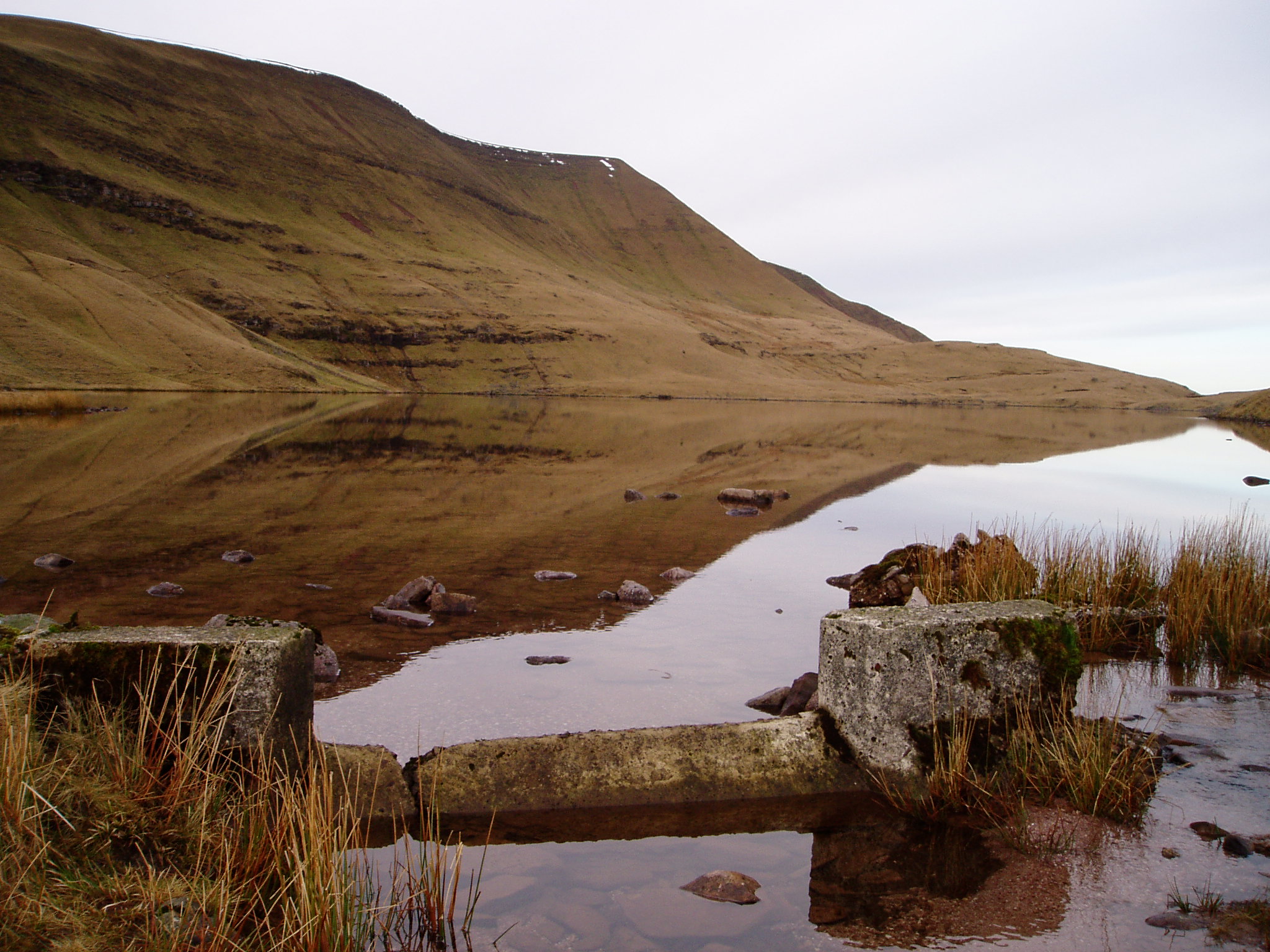|
Tabernacle Chapel, Llandovery
Tabernacle Chapel is a Calvinistic Methodist chapel in the town of Llandovery, Carmarthenshire, Wales. The present building dates from 1836 and is located in Queen Street, Llandovery. It was designated as a Grade II* listed building on 26 February 1981. Tabernacle Calvinistic Methodist Chapel was built in 1836, refurbished in 1869 and renovated in 1906. It is set back from the road and fronted by a courtyard. The facade has a raised plinth with four bays and large Gothic windows with classical details, the whole being on a rather larger scale than most Welsh chapels. There are four large pointed widows, the ones in the central bays being taller, and two doors. The walls are painted stucco and the roof is gabled with deep eaves, and Greek Revival mutules under the eaves, similar to those found at Llandingat House. The interior of the chapel has a five-sided gallery with simple panels supported by six iron posts. The pulpit dates from 1869 and is set on a painted platform with a pa ... [...More Info...] [...Related Items...] OR: [Wikipedia] [Google] [Baidu] |
Calvinistic Methodist
Calvinistic Methodists were born out of the 18th-century Welsh Methodist revival and survive as a body of Christians now forming the Presbyterian Church of Wales. Calvinistic Methodism became a major denomination in Wales, growing rapidly in the 19th century, and taking a leadership role in the Welsh Religious Revival of 1904-5. Calvinistic Methodism claims to be the only denomination in Wales to be of purely Welsh origin, owing no influence in its formation to Scottish Presbyterianism. It is also the only denomination to make use of the title Calvinistic (after John Calvin) in its name. In 18th-century England Calvinistic Methodism was represented by the followers of George Whitefield as opposed to those of John and Charles Wesley, although all the early Methodists in England and Wales worked together, regardless of Calvinist or Arminian (or Wesleyan) theology, for many years. With Calvinistic Methodists being absorbed into Presbyterianism, Methodism became defined by its adher ... [...More Info...] [...Related Items...] OR: [Wikipedia] [Google] [Baidu] |
Church (building)
A church, church building or church house is a building used for Christian worship services and other Christian religious activities. The earliest identified Christian church is a house church founded between 233 and 256. From the 11th through the 14th centuries, there was a wave of church construction in Western Europe. Sometimes, the word ''church'' is used by analogy for the buildings of other religions. ''Church'' is also used to describe the Christian religious community as a whole, or a body or an assembly of Christian believers around the world. In traditional Christian architecture, the plan view of a church often forms a Christian cross; the center aisle and seating representing the vertical beam with the bema and altar forming the horizontal. Towers or domes may inspire contemplation of the heavens. Modern churches have a variety of architectural styles and layouts. Some buildings designed for other purposes have been converted to churches, while many ori ... [...More Info...] [...Related Items...] OR: [Wikipedia] [Google] [Baidu] |
Listed Building
In the United Kingdom, a listed building or listed structure is one that has been placed on one of the four statutory lists maintained by Historic England in England, Historic Environment Scotland in Scotland, in Wales, and the Northern Ireland Environment Agency in Northern Ireland. The term has also been used in the Republic of Ireland, where buildings are protected under the Planning and Development Act 2000. The statutory term in Ireland is "protected structure". A listed building may not be demolished, extended, or altered without special permission from the local planning authority, which typically consults the relevant central government agency, particularly for significant alterations to the more notable listed buildings. In England and Wales, a national amenity society must be notified of any work to a listed building which involves any element of demolition. Exemption from secular listed building control is provided for some buildings in current use for worsh ... [...More Info...] [...Related Items...] OR: [Wikipedia] [Google] [Baidu] |
Llandovery
Llandovery (; cy, Llanymddyfri ) is a market town and community in Carmarthenshire, Wales. It lies on the River Tywi and at the junction of the A40 and A483 roads, about north-east of Carmarthen, north of Swansea and west of Brecon. History Etymology The name of the town derives from ', meaning "church enclosure amid the waters", i. e. between the Tywi and the Afon Brân just upstream of their confluence. A smaller watercourse, the Bawddwr, runs through and under the town. Roman legacy The Roman fort at Llanfair Hill to the north-east of the modern town was known to the Romans as Alabum. It was built around AD 50–60 as part of a strategy for the conquest of Wales. A Roman road heads across Mynydd Bach Trecastell to the south-east of Llandovery bound for the fort of Brecon Gaer. Another heads down the Towy valley for Carmarthen, whilst a third makes for the goldmines at Dolaucothi. Norman and medieval castle Attractions in the town include the remains of the N ... [...More Info...] [...Related Items...] OR: [Wikipedia] [Google] [Baidu] |
Carmarthenshire
Carmarthenshire ( cy, Sir Gaerfyrddin; or informally ') is a county in the south-west of Wales. The three largest towns are Llanelli, Carmarthen and Ammanford. Carmarthen is the county town and administrative centre. The county is known as the "Garden of Wales" and is also home to the National Botanic Garden of Wales. Carmarthenshire has been inhabited since prehistoric times. The county town was founded by the Romans, and the region was part of the Kingdom of Deheubarth in the High Middle Ages. After invasion by the Normans in the 12th and 13th centuries it was subjugated, along with other parts of Wales, by Edward I of England. There was further unrest in the early 15th century, when the Welsh rebelled under Owain Glyndŵr, and during the English Civil War. Carmarthenshire is mainly an agricultural county, apart from the southeastern part which was once heavily industrialised with coal mining, steel-making and tin-plating. In the north of the county, the woollen in ... [...More Info...] [...Related Items...] OR: [Wikipedia] [Google] [Baidu] |
Llandingat House, Llandovery
Llandingat House is a late Georgian detached town house in the town of Llandovery, Carmarthenshire, Wales. The house was built in the early nineteenth century and is set back some way from the road, surrounded by its own grounds. History The building dates from the early nineteenth century, probably 1813 to 1814; such substantial town houses are relatively rare in West Wales in that period. The house was built for David Lloyd Harries who had been an attorney in the town since 1808. In 1870, it passed into the hands of Lieutenant-Colonel Edward Pryse Lloyd, who changed his name to Lloyd-Harries when he came into his inheritance. In the 1890s, his brother Tudor Lloyd Harries became the owner, and since then the house has been let to Llandovery College as a boarding house. The house The house is painted roughcast and has a hipped, slate roof with deep eaves, and Greek Revival mutules under the eaves, similar to those found at the nearby Tabernacle Chapel. Semi-circular stone steps ... [...More Info...] [...Related Items...] OR: [Wikipedia] [Google] [Baidu] |
Royal Commission On The Ancient And Historical Monuments Of Wales
The Royal Commission on the Ancient and Historical Monuments of Wales (RCAHMW; cy, Comisiwn Brenhinol Henebion Cymru; ), established in 1908, is a Welsh Government sponsored body concerned with some aspects of the archaeological, architectural and historic environment of Wales. It is based in Aberystwyth. The RCAHMW maintains and curates the National Monuments Record of Wales (NMRW), an archive with an online platform called Coflein. Professor Nancy Edwards is Chair of the Commissioners. Mission statement The Royal Commission has a national role in the management of the archaeological, built and maritime heritage of Wales, as an originator, curator and supplier of information for individual, corporate and governmental decision-makers, researchers and the general public. To this end it: * Surveys, interprets and records the man-made environment of Wales * Compiles, maintains and curates the National Monuments Record of Wales * Promotes an understanding of this information by ... [...More Info...] [...Related Items...] OR: [Wikipedia] [Google] [Baidu] |
Grade II* Listed Churches In Carmarthenshire
Grade most commonly refers to: * Grade (education), a measurement of a student's performance * Grade, the number of the year a student has reached in a given educational stage * Grade (slope), the steepness of a slope Grade or grading may also refer to: Music * Grade (music), a formally assessed level of profiency in a musical instrument * Grade (band), punk rock band * Grades (producer), British electronic dance music producer and DJ Science and technology Biology and medicine * Grading (tumors), a measure of the aggressiveness of a tumor in medicine * The Grading of Recommendations Assessment, Development and Evaluation (GRADE) approach * Evolutionary grade, a paraphyletic group of organisms Geology * Graded bedding, a description of the variation in grain size through a bed in a sedimentary rock * Metamorphic grade, an indicatation of the degree of metamorphism of rocks * Ore grade, a measure that describes the concentration of a valuable natural material in the surround ... [...More Info...] [...Related Items...] OR: [Wikipedia] [Google] [Baidu] |
Chapels In Carmarthenshire
A chapel is a Christian place of prayer and worship that is usually relatively small. The term has several meanings. Firstly, smaller spaces inside a church that have their own altar are often called chapels; the Lady chapel is a common type of these. Secondly, a chapel is a place of worship, sometimes non-denominational, that is part of a building or complex with some other main purpose, such as a school, college, hospital, palace or large aristocratic house, castle, barracks, prison, funeral home, cemetery, airport, or a military or commercial ship. Thirdly, chapels are small places of worship, built as satellite sites by a church or monastery, for example in remote areas; these are often called a chapel of ease. A feature of all these types is that often no clergy were permanently resident or specifically attached to the chapel. Finally, for historical reasons, ''chapel'' is also often the term used by independent or nonconformist denominations for their places of worsh ... [...More Info...] [...Related Items...] OR: [Wikipedia] [Google] [Baidu] |
.jpg)



